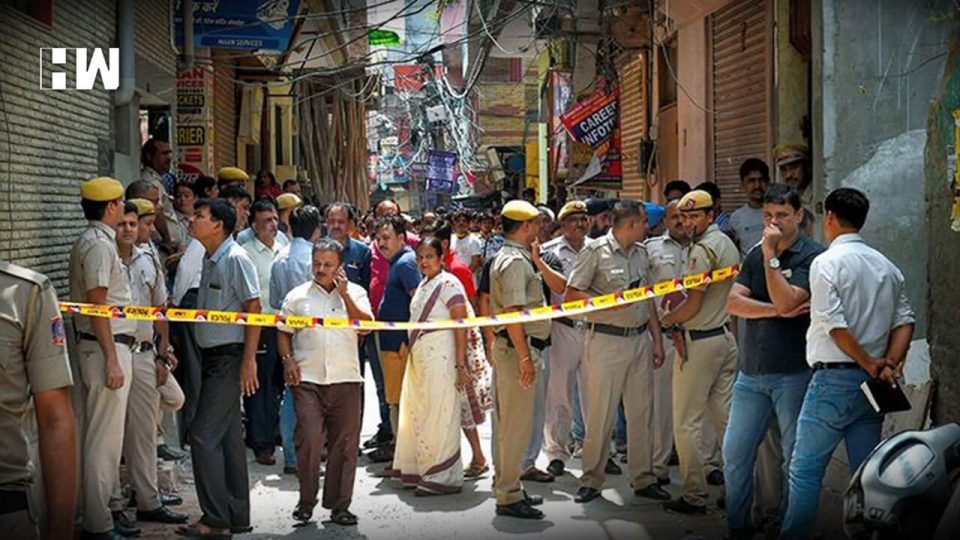New Delhi | Unravelling the mystery behind the deaths of 11 members of a family in Burari, naming Delhi Chief Minister Arvind Kejriwal in a charge sheet in the chief secretary assault case and cracking the CBSE board papers leak case were some of the cases that kept Delhi Police busy in 2018.
The year also saw Delhi Police concluding its investigation in the Sunanda Pushkar death case as it filed a nearly 3,000-page charge sheet in a city court in May accusing senior Congress leader Shashi Tharoor of abetting his wife’s suicide. Ever since Pushkar was found dead in the suite of a south Delhi hotel on January 17, 2014, the case remained in news and the police also earned criticism for its probe.
The uneasy relationship between the AAP dispensation and Delhi Police continued as the police filed a charge sheet against Kejriwal and his deputy Manish Sisodia naming them as accused along with 11 AAP MLAs in the assault on chief secretary Anshu Prakash in February.
The AAP ministers dubbed the police charge sheet as “bogus” and said it was another example of a witch hunt by the Modi government. Delhi Police again came in for criticism from the government for its “lax security” after a man threw chilli powder at Kejriwal outside his office in the Delhi Secretariat in November.
The Delhi Assembly adopted a government resolution claiming that the city has become the “national crime capital” which was met with rebuttal by the police which said it was incorrect as the number of heinous crimes declined this year from that in 2017. The Crime Branch and Special Cell of Delhi Police had a busy year as they worked on many cases that were transferred to them from the local police.
While the Umar Khalid attack case was transferred to the Special Cell which said the attack on the JNU student leader in August was carried out by cow vigilantes, the Crime Branch was tasked with investigating the flight attendant suicide case as her family felt the local police was carrying out a “biased” probe. The Special Cell had some big catches which included the arrest of Bilal Ahmed Kawa, suspected to be involved in the 2000 Red Fort attack, and Abdul Subhan Qureshi, known as ‘India’s Osama bin Laden’ who was wanted for being the main conspirator of the 2008 Gujarat serial blasts. The unit was also involved in busting the “self-styled” vigilante group Kranti Gang, in June after several months of tracking.
Touted to be one of the biggest encounters by the unit, gangster Rajesh Bharti and his three associates were killed while eight police personnel were injured in south Delhi’s Chhatarpur. The year also saw several gunfights among gangsters. In north Delhi’s Burari area, two criminal gangs opened fire at each other in June, killing three persons, including a woman passer-by. The bloodbath was a result of the gunfight between the Tillu and Gogi gangs, believed to be involved in cases of extortion and murder in the city. Few days after this incident, Burari was in the news again as 11 members of a “prosperous” and “god-fearing” family were found dead.
While bodies of 10 members of the family were found hanging with their hands and feet tied and their mouth gagged, the matriarch was found dead in a separate room. The discovery of 11 registers, which had notings about a set of rituals to be carried out to appease God lifted the mystery off the deaths and a psychological autopsy revealed that the 11 members did not commit suicide, but it was an “accident that occurred during a ritual”.
Before the Crime Branch got into solving the Burari case, it handled the CBSE papers leak case. Fate of lakhs of students was put at stake after an Una-based teacher allegedly leaked CBSE Class 12 economics paper and Class 10 Mathematics paper in March. Crime against women continued to be on the rise with 1,983 cases of rape reported till November 30. Cases of child sexual abuse underlined how vulnerable are the children in the spaces usually considered safe for them.
From an eight-month-old girl being raped by her cousin in northwest Delhi’s Subhash Place to a Class 2 student of a New Delhi Municipal Council-run school being raped in the upscale Gole Market area by an electrician on the institute premises in August, police officers grappled with cases of sexual abuse that demanded utmost sensitivity from them.
Among the 459 cases of murder that were reported until November 30, some of the sensational ones included the killing of Ankit Saxena by the family members of a woman whom he was in love with since they belonged to different communities.
In June, the killing of an Army Major’s wife by a fellow officer since he was obsessed with her grabbed headlines. The police had their plate full as they also solved cases which drew the social media ire after videos of some incidents went viral.
A Delhi policeman’s son was arrested after a video in which he could be seen brutally thrashing a woman went viral, prompting the Union Home Minister to tweet that he had directed Delhi Police Commissioner Amulya Patnaik to take action in the matter. Another video that shocked netizens was one in which Ashish Pandey, son of a former BSP MP, could be seen brandishing a pistol at guests at a five-star hotel in October.
As an independent media platform, we do not take advertisements from governments and corporate houses. It is you, our readers, who have supported us on our journey to do honest and unbiased journalism. Please contribute, so that we can continue to do the same in future.

